Below are more photos of what the camp looks like, after some amount of clean up resulting from Beaver Weekend, and what I assume (hope) are some clean-up efforts by the logging company, per the contract. Clicking on any images will bring up a full size view. Notice that some of these are movies(!) to give a better impression from the center of some of the camps.
I expect that different people will have different reactions to the photos below. Some may see these as evidence of improvement. Is that the case? Dunno.
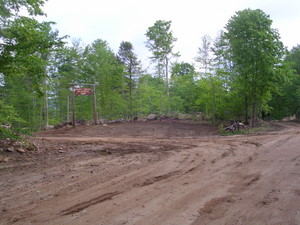
Here's the turn-off next to the parking lot, and the new building that is going up (view looking North).
|
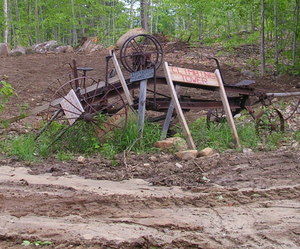
I'm sure this stuff will be taken away shortly.
|
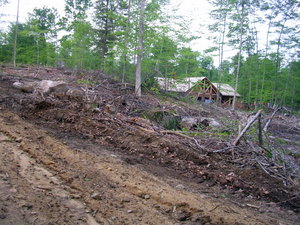
A little further down the main road, looking back South. You can see the building under construction just over the rise.
|
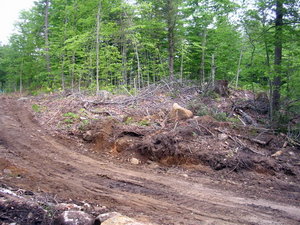
This is basically the same turn-off as was shown from (M) a month ago.
|
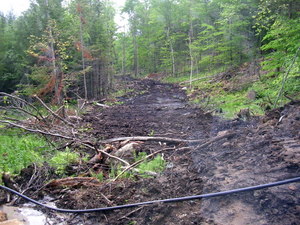
Here's a repeat of view (L) from a month ago. Not much differrent.
|
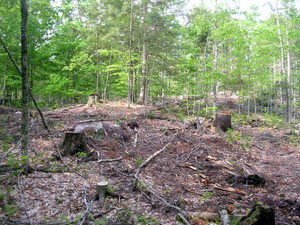
On this walk-around, I started from behind the pavilion where we get the first night's meal, and headed down that little path that leads over to Apache. A lot more sunshine, now that there are fewer trees.
|
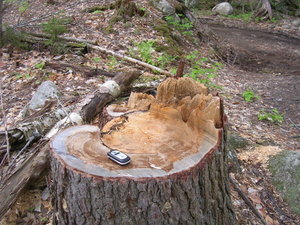
It's been suggested that after only a couple of years, you won't know anything's happened. I don't know about that. We'll never see trees this old/big again in our lifetimes at Cedarlands. (The cell phone was included for size reference.)
|
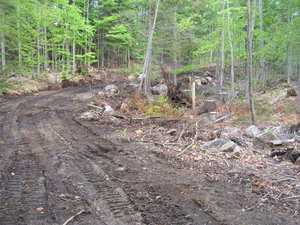
Looking NW, along the path beside Ute & Apache.
|
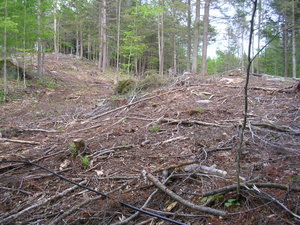
This and the next few photos show what the grounds look like in and around the Apache site.
|
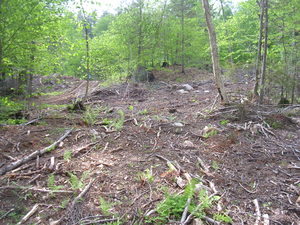
Yup... A lot more opportunity for sunshine.
|
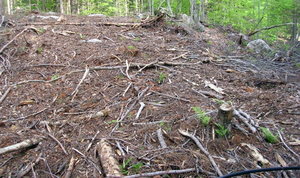
I have to guess/hope that the logging company was contracted to come back and help clean this up.
|
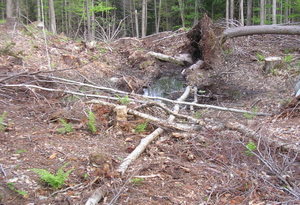
Does having fewer trees increase, or decrease the chance of blowdowns? One of the justifications for all this was that these improvements would make us all safer.
|
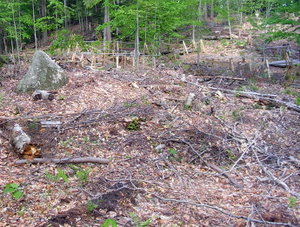 |
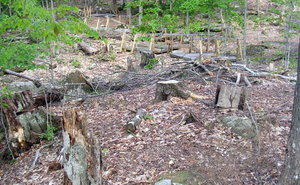
Just how selective was this harvest?
|
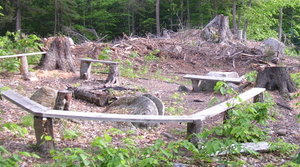
The council ring. Same as (N) from last month, but now looking to the NE. Notice the size of the trees that were taken down.
|
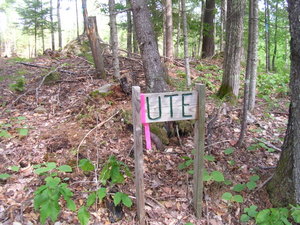 |
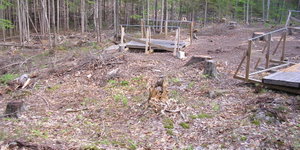
Working in a loop, the next few photos are from Ute.
|
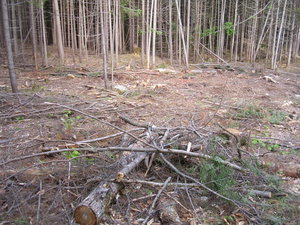
This photo shows a clear demarcation between harvested areas, and the kind of forest we now are allowed.
|
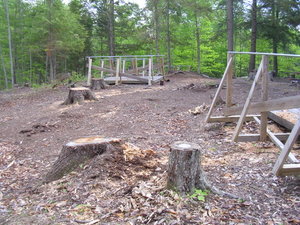 |
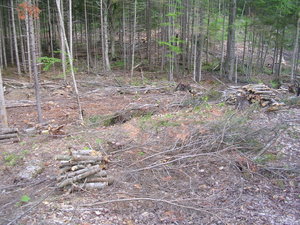
The efforts of the volunteers from the weekend prior are quite clear; I'm being quite sincere when I say that. They did a heroic job, considering the amount of cleanup that was asked of them.
|
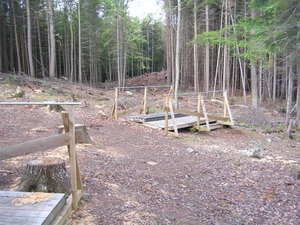 |
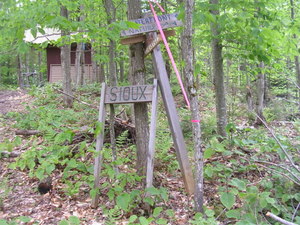
Sioux site for the next few.
|
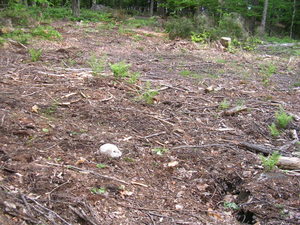
Walking around was more than a little tricky. That rule about making everybody wear closed toe footwear will need to be strictly enforced.
|
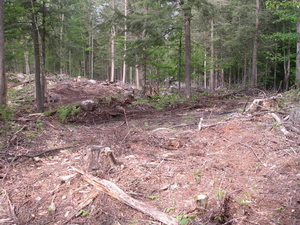
More sunlight. |
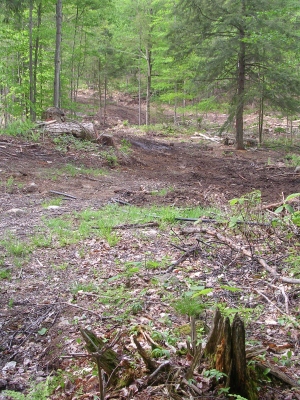 |
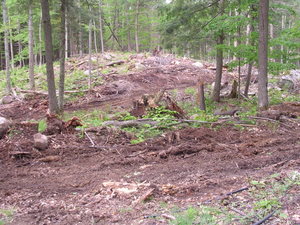
The skid paths are all over the place, and it's hard to describe or show the effect they have made on the landscape. There used to be only a few clear paths from one site to another in camp. We may benefit from having these paths added to the maps to help people new to the camp. It's difficult to know when you are on one of the original roads, or one of the new skid paths. I've been told that these will quickly regrow and be less noticible.
|
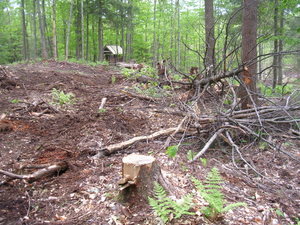
Around here, I crossed over and made my way into the Easter side of Seminole, which are shown in the next few shots.
|
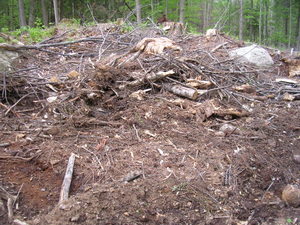
You'll notice in a lot of these photos that the actual land is still quite littered with a significant amount of debris from the logging operation.
|
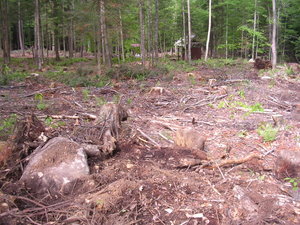 |
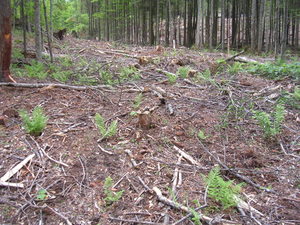 |
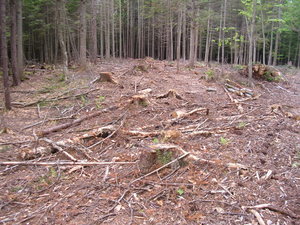
I find myself running out of words to describe all of this. Were there really that many widow makers that justified clearing out such wide areas?
Were all of these trees really diseased?
It don't remember it being that bad myself.
Does anybody else have memories of this? |
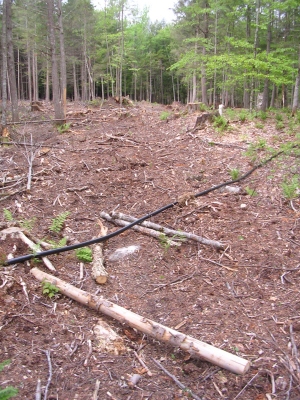 |
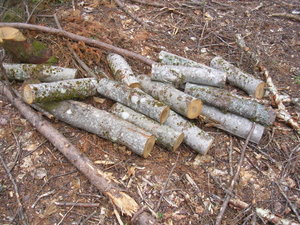
Finding firewood won't be a problem for quite some time.
|
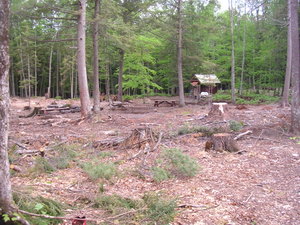
View from inside Seminole, looking North towards the entrance. I never knew this site very well, so I'll leave it to others to determine if this is better or worse than before.
|
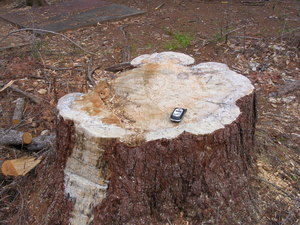
I didn't stop to count the rings on this tree stump (but then again, neither did anybody else).
|
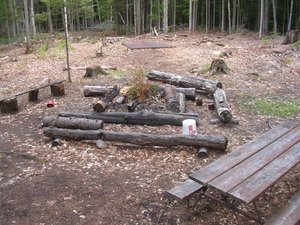
The fire ring at Seminole.
|
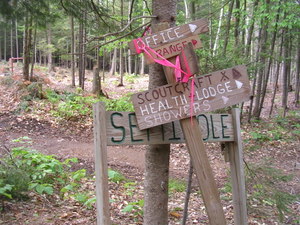 |
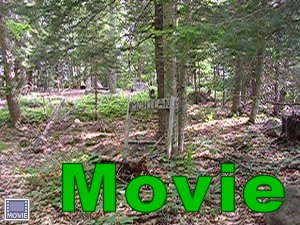 Mohican didn't get affected at all! That's because it was within the safety no-logging zone that extends for a little ways around the water's edge. If anybody in the future wants to compare logged vs original camp sites, this would be a good place to check. Mohican didn't get affected at all! That's because it was within the safety no-logging zone that extends for a little ways around the water's edge. If anybody in the future wants to compare logged vs original camp sites, this would be a good place to check.
|
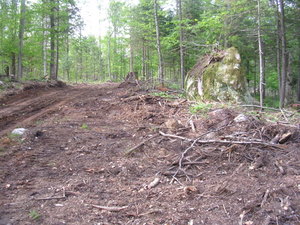
Looking to the SE from Mohican.
|
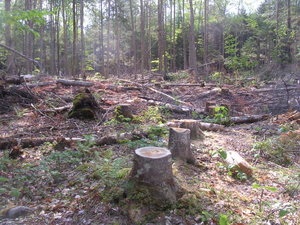
More of the same.
|
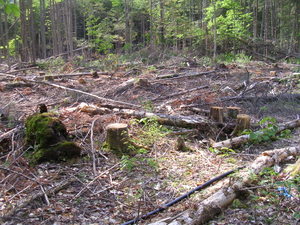
I believe this and the next couple are from Algonquin.
|
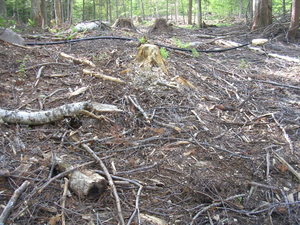 |
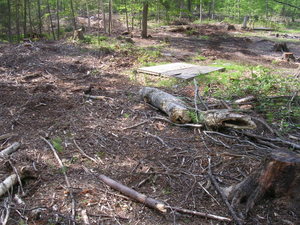 |
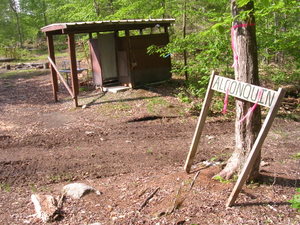 |
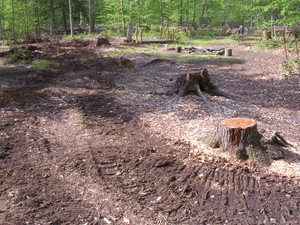
Skid paths and stumps.
|
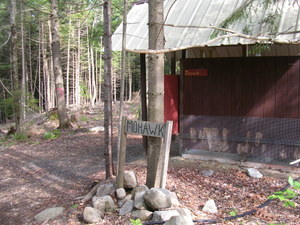
Mohawk appeared to be in that half and half zone, part in the no-log area, and part outside.
|

The fire pit at Mohawk.
|
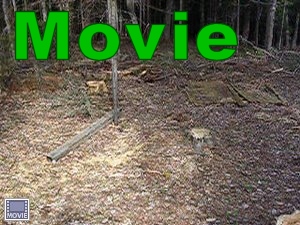
It was right about here that I finally figured out that I could take panoramic movies of what things looked like, instead of many photos (duh!). This first one is from the middle of the Mohawk site.
|
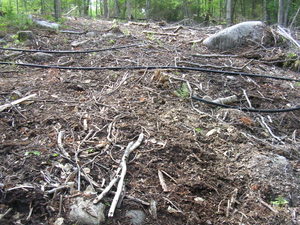
From Mohawk, I continued on to enter Cayuga from the North.
|
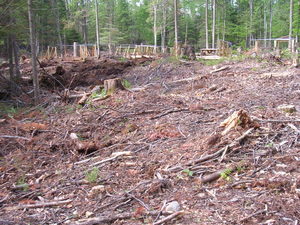
A panorama of the tent stands at Cayuga.
|
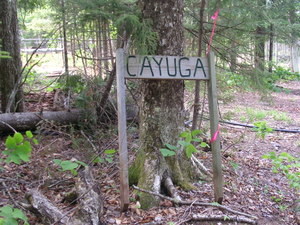 |
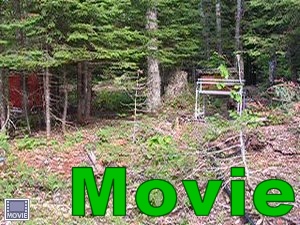
First of two movies taken at Cayuga. Unfortunately, I didn't realize that the resultant resolution would be so choppy, and I wasn't sure how fast to pan the camera around.
|
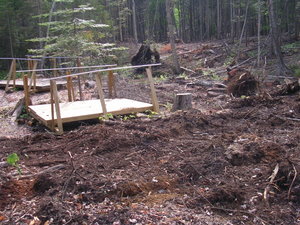
Notice here and in the movie below the scale of the skid paths right through the camp area. These will probably need extra effort to smooth over.
|
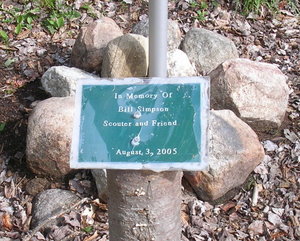
I and another parent from T14 were there that day to help.
|
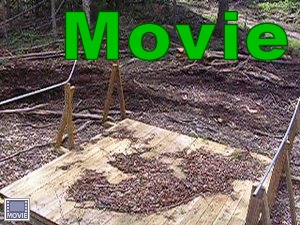
2nd movie of Cayuga.
|
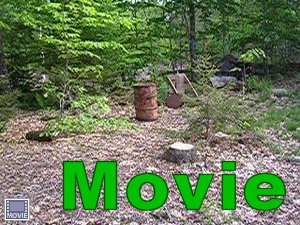
Oneida... our normal stomping grounds.
|
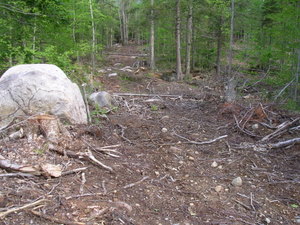
I found it hard to orient myself to where things used to be because of the many new paths.
|
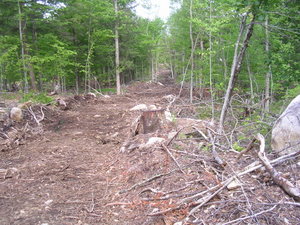 |
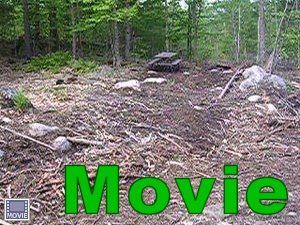
2nd movie for the Oneida area. This one was taken from the area just on the North side of the rise where we'd establish our main cooking area.
The image on the right is looking up towards the shower facilities. The original path to Oneida runs left-right in the photo (with the camp to the right). |
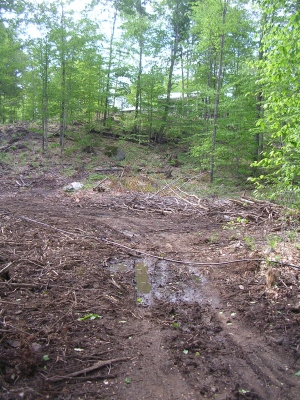 |
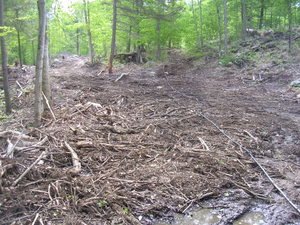 |
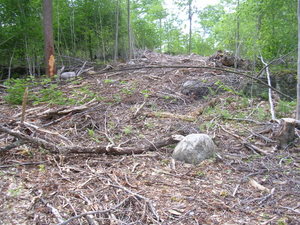 |
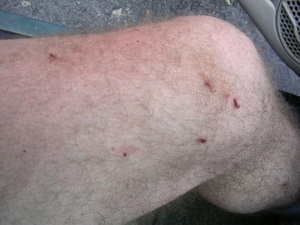 |
And yes, in case anybody was worried,
the black flies survived! |